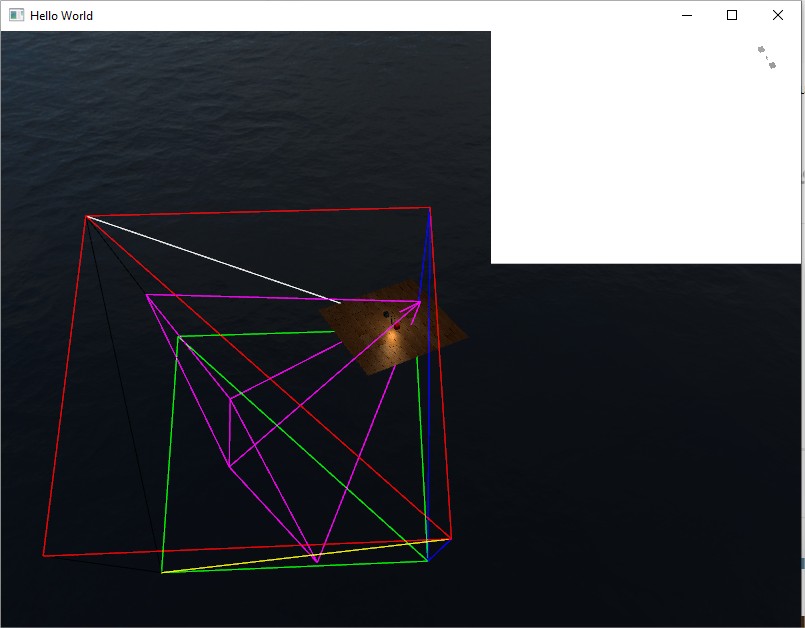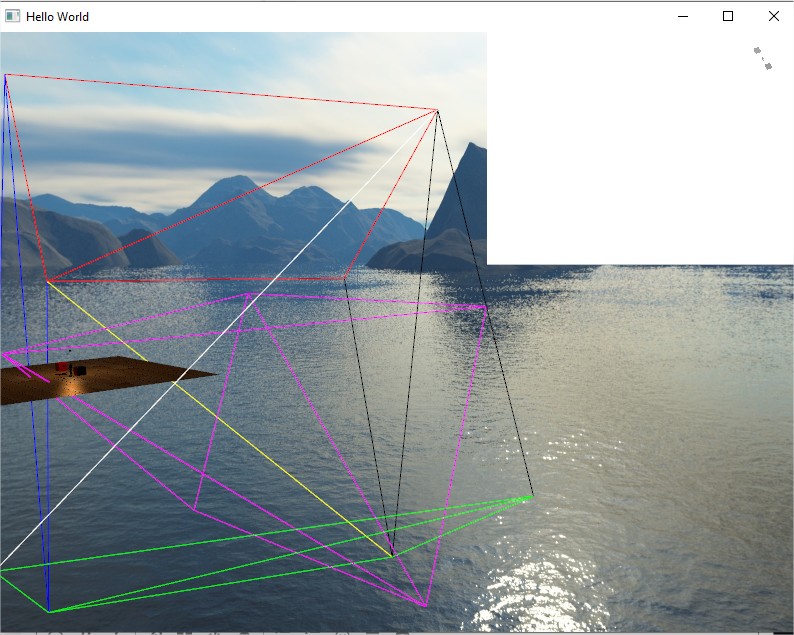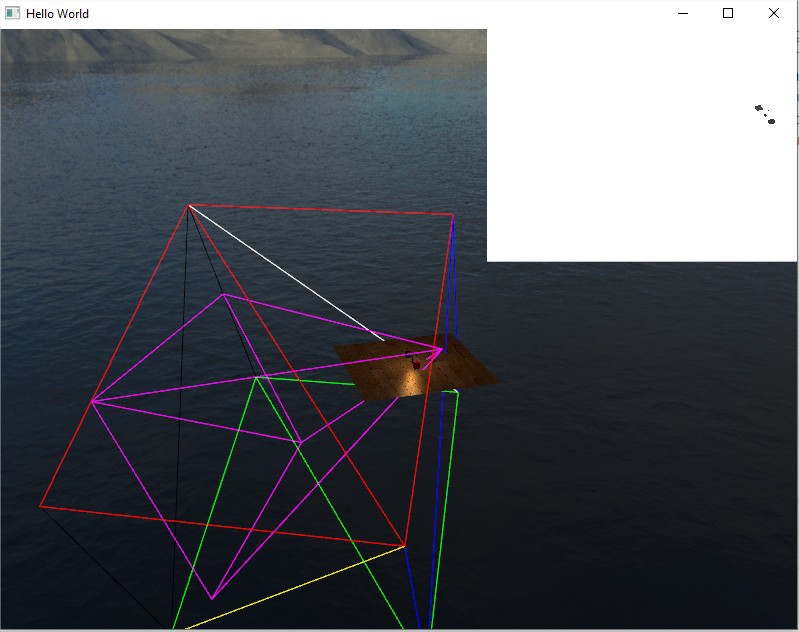I’m trying to calculate tight ortho projection around the camera for better shadow mapping. I’m first calculating the camera frustum 8 points in world space using basic trigonometry using fov, position, right, forward, near, and far parameters of the camera as follows:
PerspectiveFrustum::PerspectiveFrustum(const Camera* camera)
{
float nearHalfHeight = tanf(camera->GetFov() / 2.0f) * camera->GetNear();
float nearHalfWidth = nearHalfHeight * Screen::GetWidth() / Screen::GetHeight();
float farHalfHeight = tanf(camera->GetFov() / 2.0f) * camera->GetFar();
float farHalfWidth = farHalfHeight * Screen::GetWidth() / Screen::GetHeight();
glm::vec3 nearCenter = camera->GetEye() + camera->GetForward() * camera->GetNear();
glm::vec3 nearTop = camera->GetUp() * nearHalfHeight;
glm::vec3 nearRight = camera->GetRight() * nearHalfWidth;
glm::vec3 farCenter = camera->GetEye() + camera->GetForward() * camera->GetFar();
glm::vec3 farTop = camera->GetUp() * farHalfHeight;
glm::vec3 farRight = camera->GetRight() * farHalfWidth;
m_RightNearBottom = nearCenter + nearRight - nearTop;
m_RightNearTop = nearCenter + nearRight + nearTop;
m_LeftNearBottom = nearCenter - nearRight - nearTop;
m_LeftNearTop = nearCenter - nearRight + nearTop;
m_RightFarBottom = farCenter + farRight - farTop;
m_RightFarTop = farCenter + farRight + farTop;
m_LeftFarBottom = farCenter - farRight - farTop;
m_LeftFarTop = farCenter - farRight + farTop;
}
Then I calculate the frustum in light view and calculating the min and max point in each axis to calculate the bounding box of the ortho projection as follows:
inline glm::mat4 GetView() const
{
return glm::lookAt(m_Position, glm::vec3(0.0f, 0.0f, 0.0f), glm::vec3(0.0f, 1.0f, 0.0f));
}
glm::mat4 DirectionalLight::GetProjection(const Camera& camera) const
{
PerspectiveFrustum frustum = camera.GetFrustum();
glm::mat4 lightView = GetView();
std::array<glm::vec3, 8> frustumToLightView
{
lightView * glm::vec4(frustum.m_RightNearBottom, 1.0f),
lightView * glm::vec4(frustum.m_RightNearTop, 1.0f),
lightView * glm::vec4(frustum.m_LeftNearBottom, 1.0f),
lightView * glm::vec4(frustum.m_LeftNearTop, 1.0f),
lightView * glm::vec4(frustum.m_RightFarBottom, 1.0f),
lightView * glm::vec4(frustum.m_RightFarTop, 1.0f),
lightView * glm::vec4(frustum.m_LeftFarBottom, 1.0f),
lightView * glm::vec4(frustum.m_LeftFarTop, 1.0f)
};
glm::vec3 min{ INFINITY, INFINITY, INFINITY };
glm::vec3 max{ -INFINITY, -INFINITY, -INFINITY };
for (unsigned int i = 0; i < frustumToLightView.size(); i++)
{
if (frustumToLightView[i].x < min.x)
min.x = frustumToLightView[i].x;
if (frustumToLightView[i].y < min.y)
min.y = frustumToLightView[i].y;
if (frustumToLightView[i].z < min.z)
min.z = frustumToLightView[i].z;
if (frustumToLightView[i].x > max.x)
max.x = frustumToLightView[i].x;
if (frustumToLightView[i].y > max.y)
max.y = frustumToLightView[i].y;
if (frustumToLightView[i].z > max.z)
max.z = frustumToLightView[i].z;
}
return glm::ortho(min.x, max.x, min.y, max.y, min.z, max.z);
}
Here’s captured results as you can see top left corner quad shows the shadow map which is completely wrong result as can be seen:
(The smearing of the shadow map values is just an artifact of the gif compresser I used it doesn’t really happen so there’s no problem of me not clearing the z-buffer of the FBO)





